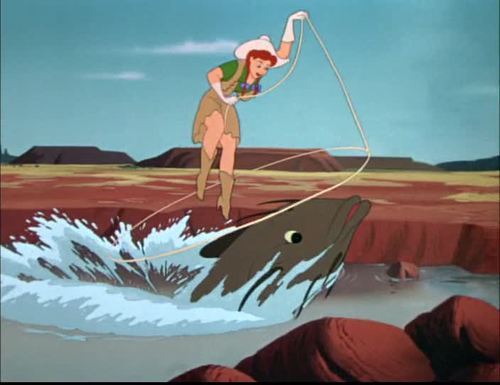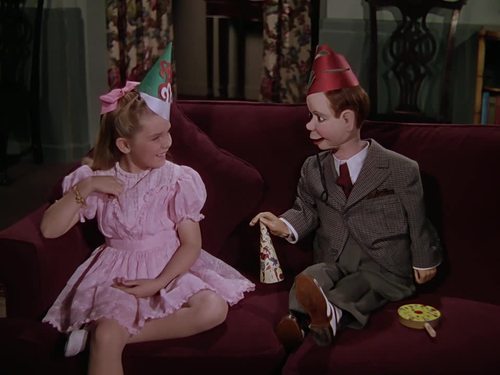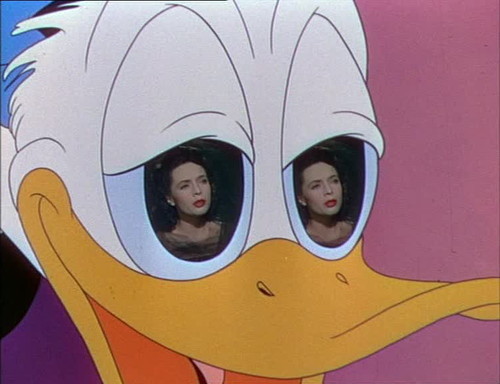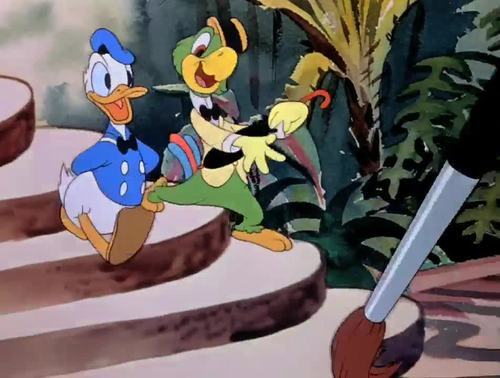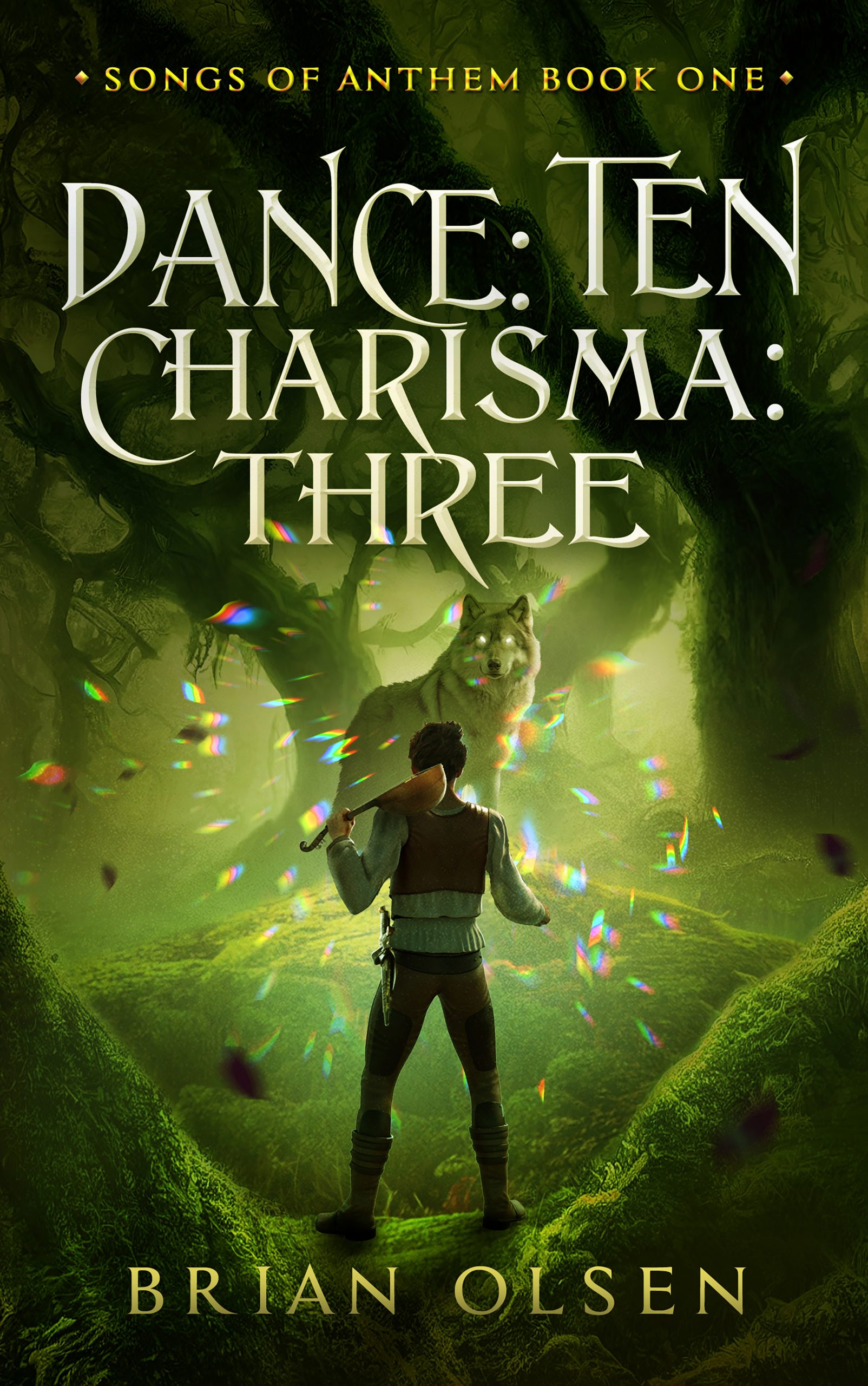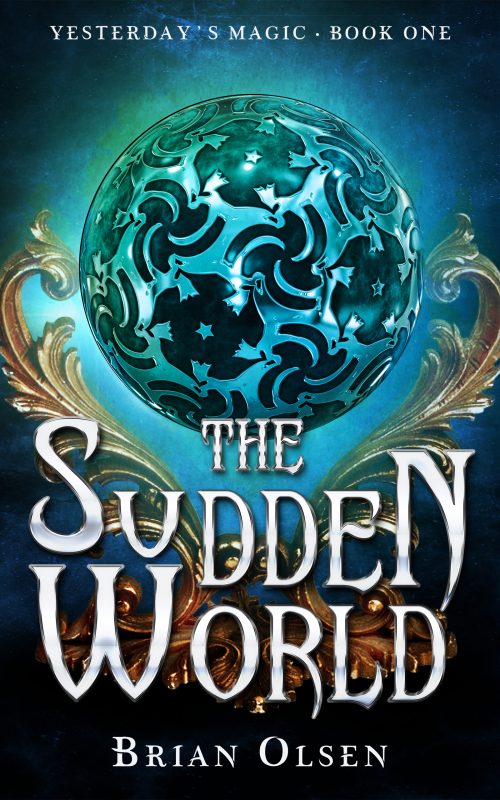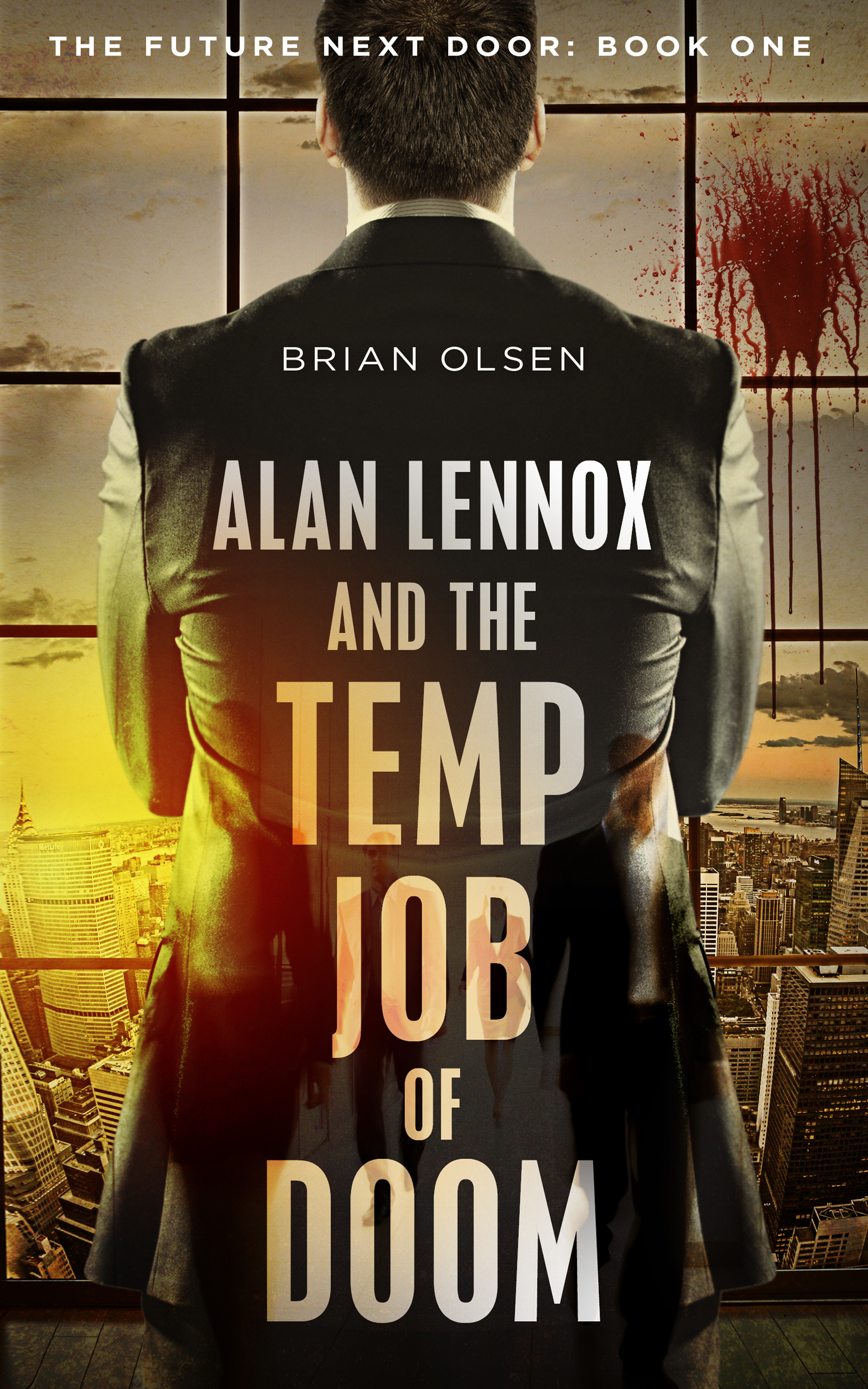Melody Time (1948) is (sigh) yet another package film from the Disney studios. After The Reluctant Dragon, Saludos Amigos, The Three Caballeros, Make Mine Music, and Fun and Fancy Free, I’m kind of running out of enthusiasm for the format. Disney’s still feeling the financial hit of the war, so he’s still throwing a bunch of shorts together on the cheap and calling them features. Better things are coming once we hit the fifties, but for now, let’s put our heads down and see what he’s served us this time, shall we?
- We’re off to a promising start. Lots of stars in the opening credits, although I confess the Andrews Sisters, Roy Rogers and Trigger are the only names I immediately recognize. And the sequence for the title song is well done – “Melody Time” is sung by some stylized masks, created by a paint brush. That whole “brush creates the characters” thing has been done before, but it’s cute here and I like the design of the masks. It’s making me hopeful that maybe this wasn’t slapped together as haphazardly as Fun and Fancy Free seemed to be.
- “Once Upon a Wintertime” is our first story. Two young lovers are enjoying a sleigh ride pulled by two enormous horses – they’re like the horse from “What’s Opera, Doc?” with longer necks. There’s not much of a story, at first – they stop and go ice skating and make lots of hearts in the snow so we know they’re in love. But then he does something dopey and she gets mad and storms off and because women – am I right, fellas? – she doesn’t see the “Thin Ice” sign. The ice shatters and he tries to save her but he fails miserably and knocks himself unconscious. Her chunk of ice drifts through some rapids towards a deadly drop over a waterfall – wait, where the hell were they ice skating? Whoever made that “Thin Ice” sign was really underselling the danger. Anyway, the animals, led by the poster children for Horse Growth Hormone, rescue her, and she’s back in love with her man even though he did nothing but make the situation worse. Then a close-up on their loving faces fades to a photo of the two of them in a living room. It’s meant to suggest that they lived happily ever after, except I swear that it’s a different woman in the photo. I guess at some point she wised up. Or drowned.
- “Bumble Boogie” gives us a jazzy rendition of “Flight of the Bumblebee” while the titular bug tries to escape a Dali-esque hellscape of plant/musical instrument hybrids trying to kill him. It’s an acid trip worthy of Fantasia and I love it.
- “The Legend of Johnny Appleseed” is next. The whole thing is a little too Jesus-loves-me-this-I-know for my tastes, but given John Chapman’s real life religiosity that’s probably appropriate. John’s a scrawny little fella who wants to head west with the pioneers (because there’s “plenty of room” – nobody out there already, nope, just unclaimed, uninhabited land as far as the eye can MANIFEST DESTINY), but he doesn’t think he has the suitable skill set to survive out there. His guardian angel appears in a vision, because Johnny is out of his god-damned mind, and convinces him to head west with just a pot on his head, a bag of apple seeds and a Bible. Pretty sure the angel was muttering, “Kill them, Johnny, kill them all and take their eyes,” but my copy didn’t have great sound so he might have been saying something else. Long story short, Johnny spends the rest of his life planting apple orchards all over the country and becomes beloved by the good-hearted pioneer folk for providing them with God’s chosen fruit. After forty years of walking and planting, looking like someone you’d change subway cars to get away from, he dies underneath an apple tree (cyanide poisoning from eating too many apple seeds if I had to guess), and his angel comes to take him to Heaven. They need him, you see, because the afterlife doesn’t have any apple trees. And in a twist worthy of a Christmastime stop-motion “secret origin of Santa” special, it’s revealed that clouds are actually Heaven’s apple orchards, planted by the ghost of Johnny Appleseed. Betcha they didn’t teach you that in your Godless public school, did they, sonny? I hate apples but luckily I’m unlikely to ever get to Heaven.
- I did some research on John Chapman after watching this movie (damn you, Disney, for prompting me to learn), and apparently the apple trees were beloved by the pioneers mostly for real estate reasons – orchards were required to maintain their claim on otherwise unclaimed land. Johnny had religious objections to grafting, so the wild apples that grew from his trees were pretty much inedible and only used for making hard cider. Thanks for getting our ancestors drunk, Johnny! Your legacy lives on today!
- Next up is…oh, dear…”Little Toot.” (Must…resist…fart jokes…) Little Toot is a tugboat and he’s adorable as hell, and the toe-tapping song is sung by the Andrews Sisters, so I pretty much love this from frame one. Toot doesn’t take his job seriously – he just wants to play! – and he accidentally sends an ocean liner crashing into the city, toppling buildings and (presumably) killing thousands. Oh, Toot! You scamp! (Toot doesn’t talk so you could say he’s silent but deadly.) He gets banished to the deep ocean where he saves another ship and all is forgiven and Toot’s a hero. Hooray! Three toots for Little Toot! Toot! Toot! Too – oh, excuse me. I had cucumbers with lunch.
- Joyce Kilmer’s poem “Trees” is set to music for the next segment, in which we watch a tree experience the changing seasons. Snore. I fell asleep just typing that. Nothing that wasn’t done better in Fantasia, or even Bambi. On the line, “Only God can make a tree,” the camera pulls back and the tree is in the shape of a cross with a glowing nimbus of light around it. Even the Veggie Tales cast would look at this and say, “A little heavy-handed with the religious stuff, don’t you think?”
- “Blame It on the Samba” has…can it be? José Carioca! Donald Duck! Is that Panchito Pistoles? Could it be the Three Caballeros reunited? Oh, no, it’s not Panchito, it’s that irritating Woody Woodpecker rip-off, the nameless Aracuan bird. Oh, well. This segment is still pretty great, despite being a Caballero down. The music is fun and the birds never speak so I don’t have to worry about their complete incomprehensibility. I get worried when a live-action woman shows up, as the unnatural carnal lusts of cartoon fowl are well-documented, but the birds seem to be too caught up in the music to bother her. Also, unlike in other movies, they’re scaled to actual bird size compared to her, which I find weird for some reason. Like most cartoons with José and Donald together, the animators say goodbye to sanity about halfway through and things get really fun. This is definitely a highlight of the film.
- Our next, and final, segment opens with tumbleweeds rolling across the desert at dusk while a lonesome voice croons, “Bluuuuuueeee shadooooows…on the traaaaaiiilllll…” Consider the mood well and truly set. It’s the story of “Pecos Bill,” told by live-action Roy Rogers to those two annoying kids from Song of the South, Bobby Driscoll and Luana Patten. (Luana was also the little girl in Fun and Fancy Free, so I guess she was not murdered by the living ventriloquist’s dummies as I hoped feared.) Trigger’s there too, but unfortunately he doesn’t do too much. (I say unfortunately because he’s a better actor than either of the kids.) So, yeah, Pecos Bill, lost in the desert by his parents as they headed west, found and raised by coyotes. (We actually see baby Bill headed to the coyote’s teat to nurse, but just as he’s about to get his lips around her we cut to mama’s face as her expression turns from surprise to pleasure. It’s…unsettling.) Bill basically gets super-powers from living with animals, and Roy sings a bunch of tall tales about Bill’s adventures, which are a lot of fun (apart from the one about the “painted Indians” – I won’t go into it, but…ugh). Then he meets Slue-Foot Sue and falls instantly in love. When we first see Sue she’s riding a giant catfish down a river, while the catfish jumps through the hoops she’s making with her lasso. I kind of fall in love with her, too. Sue meets an unfortunate end – on their wedding day, she gets bucked from Bill’s jealous horse and lands on the moon, stranded there forever, never to be seen again. And that’s why coyotes howl at the moon, Roy tells us in another Rankin-Bass kind of moment. The ending is meant to be silly but it disturbed me a little. Poor Sue, another strong female character fridged to provide motivation for the male protagonist.
- And that just about exhausts my thoughts on the subject. Melody Time had more hits than misses, which is about the best you can hope for in these package films. It’s hard to judge them as features, since they’re really collections of cartoon shorts with only the flimsiest of connecting themes. This one’s worth having on in the background while you do housework, I guess. But Disney can do better.
